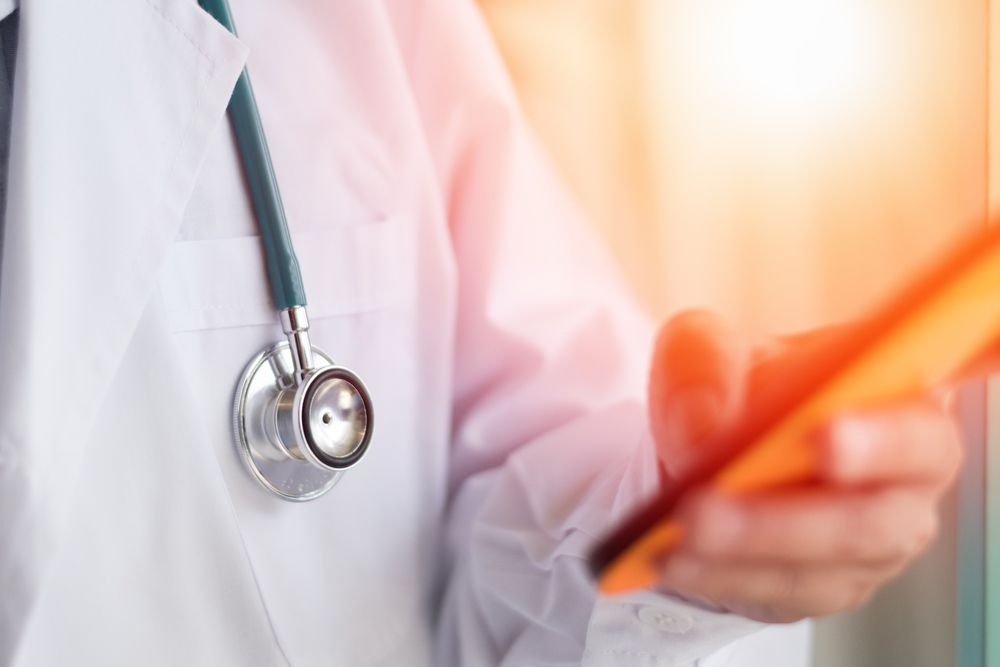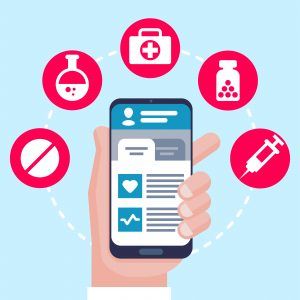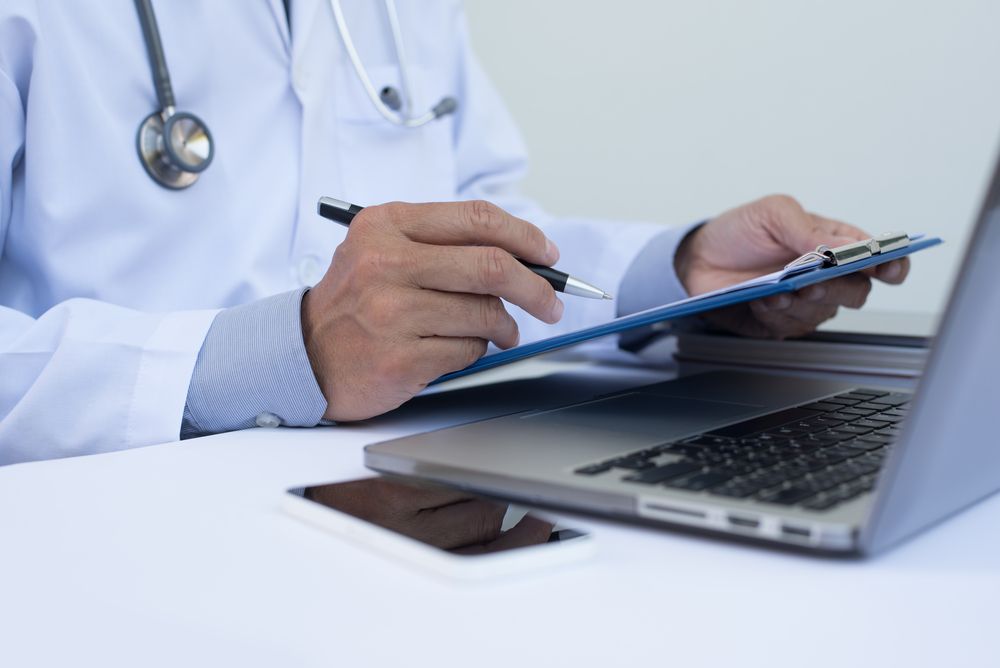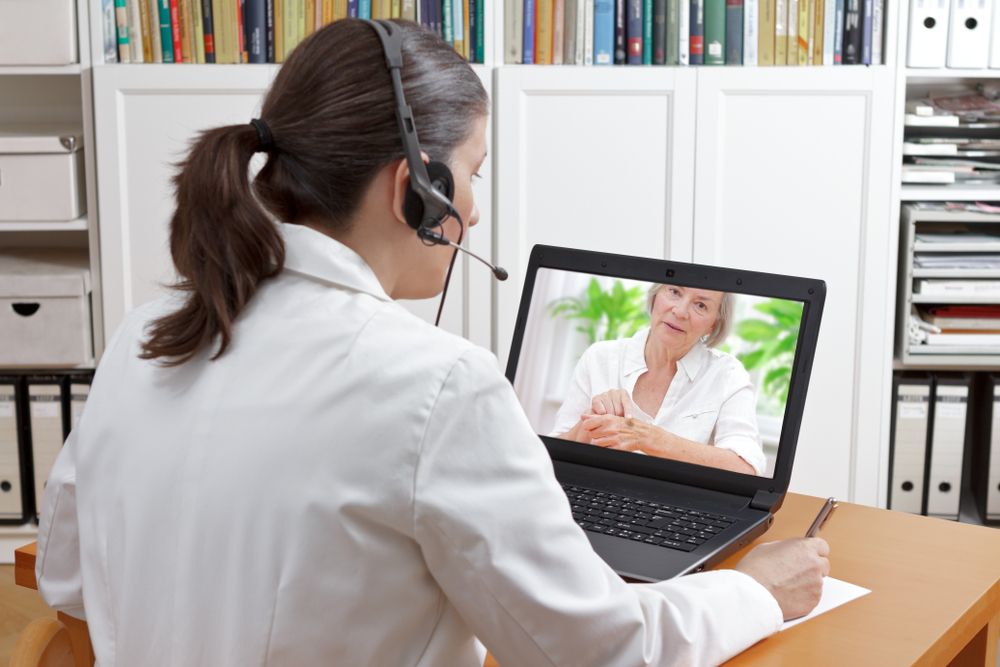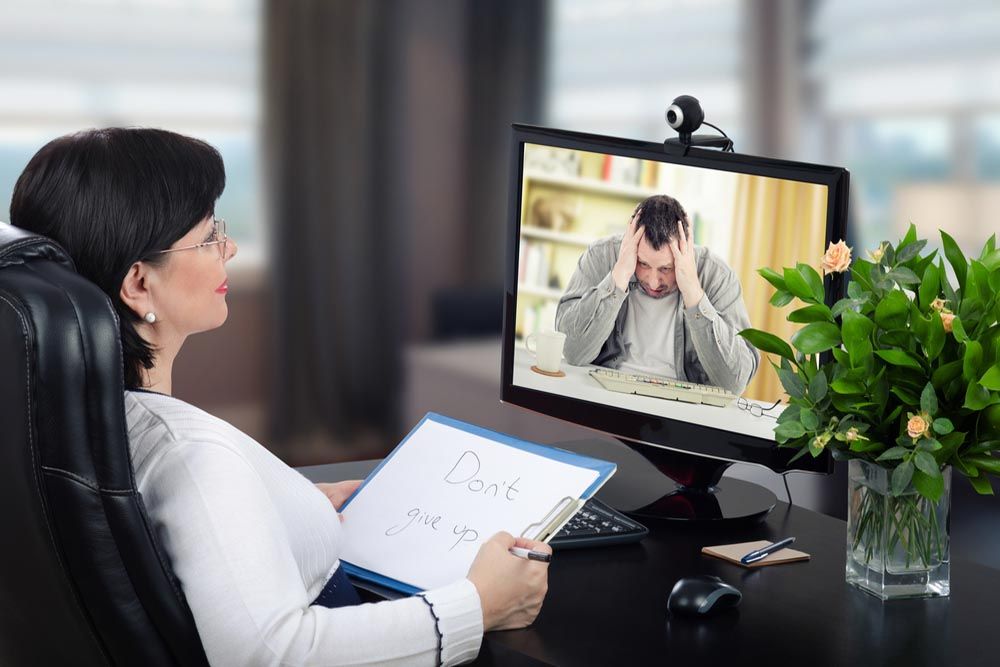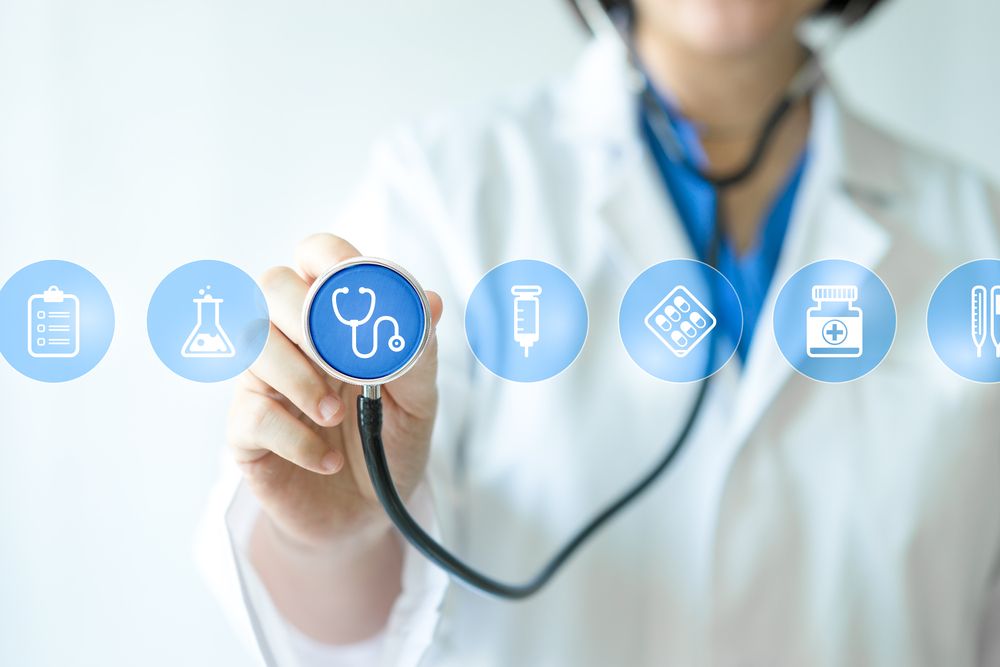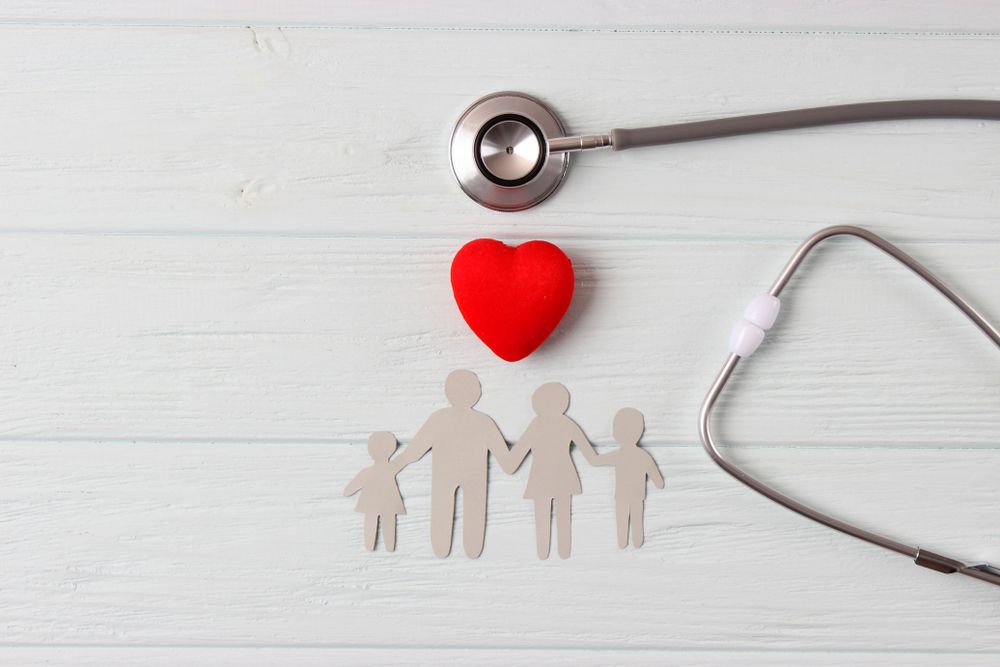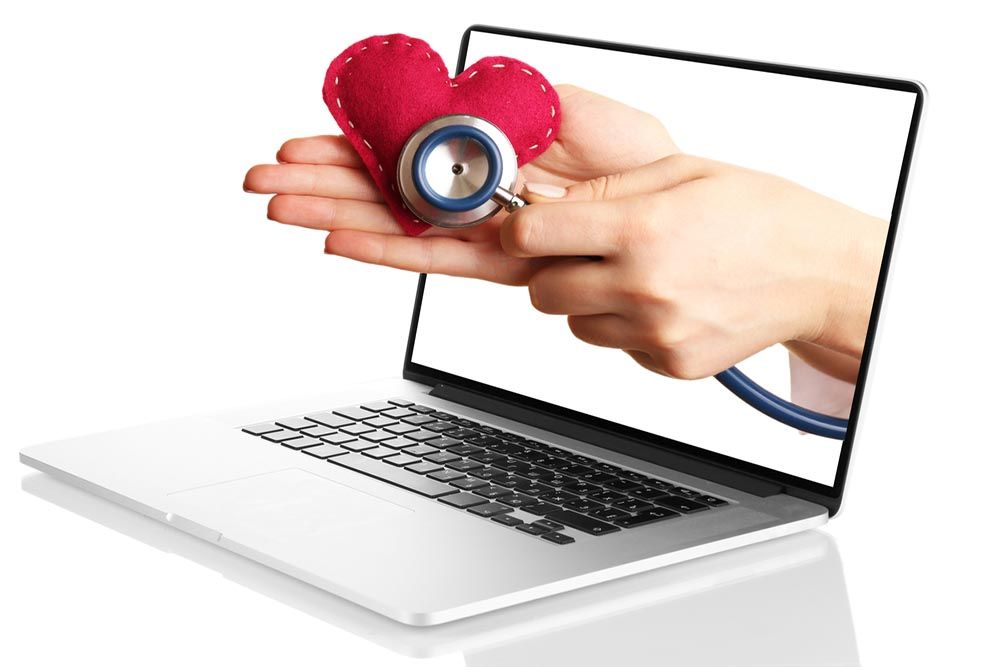The World Health Organization (WHO) explains that mHealth is a component of eHealth that involves the use of wireless and mobile devices to support health care services. (Learn More)
Anyone with a mobile phone, tablet, or other wireless device can use mHealth for a variety of purposes, including to gain information on health care, track medications, make health care appointments or obtain consultations, and store medical files. (Learn More)
There are over 5 million people with cellphones all over the world, and nearly all of the globe is covered by a wireless provider (85 percent). As technology advances, more and more information is available at your fingertips in the blink of an eye. Medicine and health care are growing along with technology at a rapid pace.
There are pros and cons to mHealth. Benefits include convenience and increased access to information and care, while some potential risks are difficulties regulating the field and potential data breaches. (Learn More)
Typically, mHealth is designed to enhance and augment traditional health care methods and services. (Learn More)
mHealth Explained
As technology continues to improve, and more and more people have access to mobile and wireless devices, health care and medicine are growing too. This includes expansion into telemedicine and eHealth.
A component of eHealth, mHealth is using mobile or wireless devices to access or support health care services and support. You may use a smartphone, wireless phone, tablet, wearable device, or a personal digital assistant (PDA) for mHealth purposes.
Sometimes called mobile health, mHealth, can literally put medicine and medical information directly into your hands with a quick swipe or touch of a screen. With the advent of mHealth, more and more people have access to medical information and services than ever before.
Telemedicine includes medical services and information provided while you are not in the same location as your provider. This can include using mobile devices or computers. mHealth differs from telemedicine in that it exclusively uses a mobile or wireless device for this type of support and medical services.
mHealth includes the use of the following technologies:
- Text messages (short messaging service, or SMS)
- Voice messaging
- GPS (global positioning service)
- Apps
- Internet browsing
- Bluetooth
In general, there are four main applications for mHealth.
- Information apps that provide education and health care information
- Control apps that allow for patient monitoring
- Diagnostic apps that match symptoms and medical issues with treatment
- Adapter apps that serve to make the mobile device into a type of medical device
What Is mHealth Used For?
Most often, mHealth is used for educational and preventative health care purposes, but it can also be used for treatment support, the tracking of epidemics, surveillance of diseases, and management of chronic diseases. With over a third of Americans using either a mobile app or the internet to compare health care services in 2018, and more than 300,000 mHealth apps on the market, mHealth continues to expand and provide more options and uses for people all over the world.
Some of the uses and benefits of mHealth include:
- Increased access to information and care. It is becoming increasingly common to use your mobile device to search the internet and compare services. Health care services are no exception.
There are a multitude of apps you can use to track or check symptoms and educate yourself on potential health issues and related medical services. You can often use mHealth to make appointments with doctors and health care providers and even receive medical advice and consultations through telemedicine. - Improved intervention. There are many apps and mHealth services that open up the ability to communicate with a health care provider around the clock. This can make it easier and more convenient to get medical questions answered, even if you work fulltime and can’t make phone calls during normal business hours. This kind of 24/7 access to a doctor through an mHealth platform can provide quick answers and often real-time chat opportunities that can allow medical professionals to intervene when needed.
In the same vein, it can eliminate the need for unnecessary emergency department visits and improve care for chronic diseases by refining care coordination. - Better patient monitoring. The use of wearables and patient monitoring devices is expanding as well. These devices can provide a host of information to your medical provider, including blood pressure, heart rate, sleeping patterns, nutritional input, and exercise activities, often through mHealth and specialty applications.
- Enhanced treatment compliance. mHealth can keep you on track with your doctor’s recommendations. For example, mHealth apps can help you to keep track of your medications and remind you when to take them.
- Paperless storage solutions. With mHealth, you can upload your medical information and keep your medical files and data all in one place on a digital platform. This can eliminate the need for paper files and simplify storage.
- Real-time access to health trends. With mHealth, you are able to keep up with the latest data and trends pretty much as they are published. Health care providers can obtain instant access to information to help them make informed decisions regarding your care.
mHealth Pros and Cons
With mHealth, more people — particularly those in underserved areas — have access to medical information and support. mHealth can improve your connection with your doctor, enhance your overall care, give you expanded access to health care information, and increase transparency about your health care costs. While not everyone may have easy access to a local doctor or specialist, most people do have access to a mobile or wireless devices and therefore mHealth services.
The field is largely unregulated, however. Less than 10 percent of those using mHealth apps learned about them from their health care provider. There are hundreds of thousands of mHealth apps on the market, and it can be difficult to differentiate the good from the bad.
People who use mHealth services may obtain short-term results, but many are not likely to stick with these digital and virtual tools. This is especially true in the case of wearables and digital tracking apps. Users jump on board quickly, but also drop off rapidly as they either achieve their short-term goals, get bored, or are not seeing tangible results as soon as they would like.
Another potential downfall of mHealth involves the safety and security of the data being shared. Personal medical information is often stored and transmitted digitally through mHealth platforms, and it is important to know that your information is secure. Regulations are in the works to control and protect the flow of information as the mHealth field grows.
Using mHealth
When comparing mHealth to other forms of treatment, such as in-person services, it is important to take note of what you are using it for. For instance, mHealth can be a great tool for finding information on a specific condition and making an appointment with a doctor. You can use telemedicine to obtain a diagnosis, get a treatment plan, fill a prescription, or manage a chronic disease. Without a doubt, mHealth can save time and money.
It is best used with traditional methods of health care. It is not meant to completely take away in-person medical visits, and it is still important to cultivate a relationship with your doctor. mHealth can enhance treatment methods and give you more options.
When looking for support with mHealth, talk to your primary care provider. They may know some of the most secure apps to use that can benefit you directly and enhance your overall health care experience.
References
mHealth New Horizons for Health Through Mobile Technologies. (2011). World Health Organization (WHO).
mHealth (Mobile Health). (November 2017). TechTarget.
Using Community Paramedicine, mHealth for Care Coordination at Home. (March 2019). mHealth Intelligence.
mHealth: What Is It, and How Can It Help Us? (September 2018). Medical News Today.
The Use of Mobile Health Applications to Improve Patient Experience: Cross-Sectional Study in Chinese Public Hospitals. (May 2018). JMIR mHealth and uHealth.
Use of Mobile Health (mHealth) Tools by Primary Care Patients in the WWAMI Region Practice and Research Network (WPRN). (November-December 2014). Journal of the American Board of Family Medicine.
Patient mHealth Adoption High, But Prolonged Patient Use Limited. (September 2018). Patient Engagement HIT.
A Path to Better Quality mHealth Apps. (July 2018). JMIR mHealth and uHealth.

